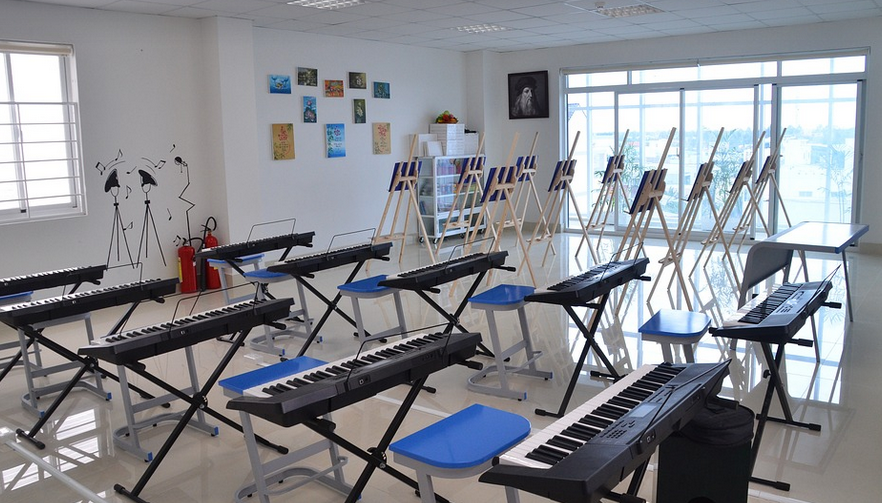
A Digital Revolution in STEM
The landscape of engineering education is undergoing a seismic shift thanks to the relentless advancement of computer technology. Gone are the days when desktops and bulky textbooks dominated classrooms. Today, we’re immersed in an era where computational thinking forms the bedrock for innovation, problem-solving, and even creative expression. This digital revolution has not only modernized learning but also opened doors to entirely new avenues of exploration.
For years, computers have served as essential tools in engineering education. From basic drafting software like AutoCAD to advanced simulation programs used for structural analysis, these applications have streamlined workflows and enhanced the learning experience. However, the true potential of computer applications in engineering education is now being realized through cutting-edge technologies that are pushing the boundaries of what’s possible.
Virtual Reality (VR) and Augmented Reality (AR) are revolutionizing how students interact with complex engineering concepts. Imagine a student studying fluid dynamics, no longer confined to static diagrams and dry textbooks. VR applications can create immersive simulations where they can manipulate physical models, analyze fluid flow in dynamic environments, and even witness real-world phenomena like wave crashing on the shore.
AR technology takes things a step further by seamlessly blending digital overlays onto real-world objects. Through AR apps, students can visualize complex structural designs overlaid onto actual building blueprints or study intricate circuit layouts projected onto their lab workbench. These immersive experiences create an invaluable bridge between theoretical knowledge and practical applications.
The rise of open-source software platforms like MATLAB, Simulink, and Python is empowering educators and students alike with unparalleled access to computational tools. These software packages offer a vast toolkit for simulating real-world systems, analyzing data sets, and even developing custom algorithms tailored to specific engineering challenges. This level of flexibility and customization allows students to dive deep into the core principles of their chosen fields.
The integration of artificial intelligence (AI) and machine learning (ML) is also transforming the way engineering education unfolds. AI-powered tools can automate repetitive tasks, provide instant feedback on student projects, and even personalize learning paths based on individual needs and progress tracking. Imagine an AI assistant that identifies the weak points in a student’s understanding of complex physics principles or offers customized learning exercises to address those specific areas.
AI-powered simulations can go beyond just visualizing abstract concepts; they can also predict potential issues before real-world testing. By using historical data and machine learning techniques, AI can analyze engineering designs, identify potential weaknesses, and even suggest improvements that could significantly enhance performance or reliability.
A New Era of Collaboration
Computer applications are not just about individual learning; they’re also fostering a collaborative environment where students from diverse backgrounds can work together. Online platforms like Google Docs and GitHub provide real-time collaboration tools that allow engineering teams to brainstorm, share ideas, and develop solutions together, regardless of their physical location.
The power of online forums and collaborative learning environments is especially evident in areas where engineering education faces unique challenges, such as distance learning or remote projects. Through these platforms, students can connect with peers from across the world, participate in group discussions about complex concepts, and share resources to learn together. This fosters a sense of community that transcends geographical barriers.
Even project-based learning is revolutionized by computer applications. Students can utilize collaborative design platforms like SketchUp to build 3D models of buildings, bridges, or even fictional robots. These digital prototypes help visualize ideas and refine designs before moving onto physical prototyping, leading to more effective engineering solutions.
Online competitions and simulated engineering challenges further promote collaboration and knowledge sharing. Students can compete in virtual design contests, simulate real-world systems through gamified simulations, or even participate in online hackathons focused on specific engineering problems. These platforms motivate students to learn from each other, develop critical thinking skills, and build a strong foundation for future careers.
The Future of Engineering Education
Computer applications have not only changed the landscape of engineering education; they’re poised to reshape the way engineers approach their work in the years to come. As technology continues to evolve at an unprecedented pace, students will be equipped with skills and knowledge that are both relevant and adaptable to a world where technological advancements are constantly reshaping industries.
The emphasis on problem-solving, critical thinking, and creativity has never been more crucial in today’s globalized economy. These skills, honed through the use of computer applications in engineering education, will empower students to navigate complex challenges, collaborate effectively with others, and contribute meaningfully to technological advancements that shape our future.
The coming years will witness a surge in innovation as engineers leverage these advanced tools to design sustainable solutions for pressing global challenges like climate change, energy scarcity, and resource depletion. With computer applications playing an ever-enlarging role in engineering education, the world is on the brink of an exciting new era where technology fosters collaboration, creativity, and a future built upon innovation.





